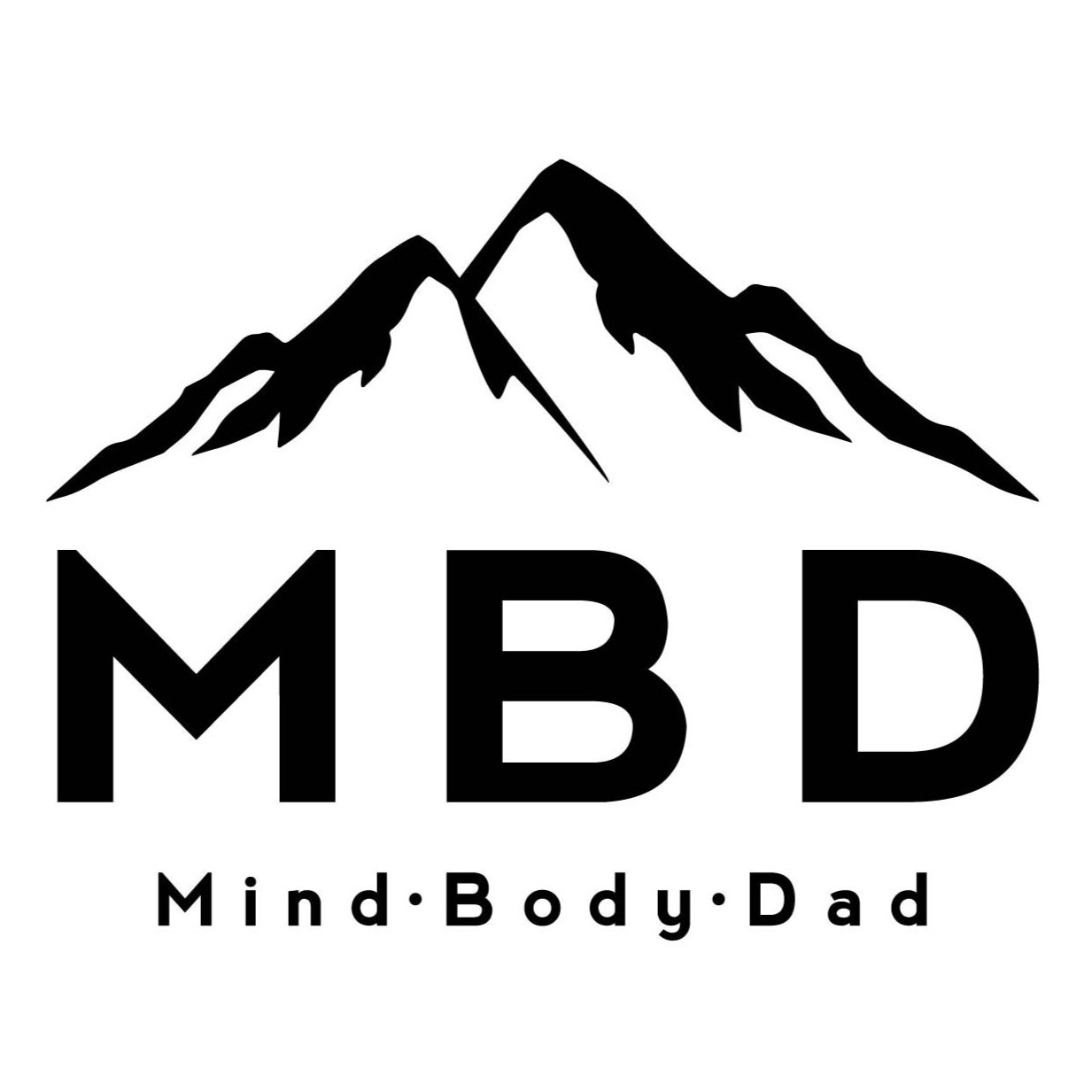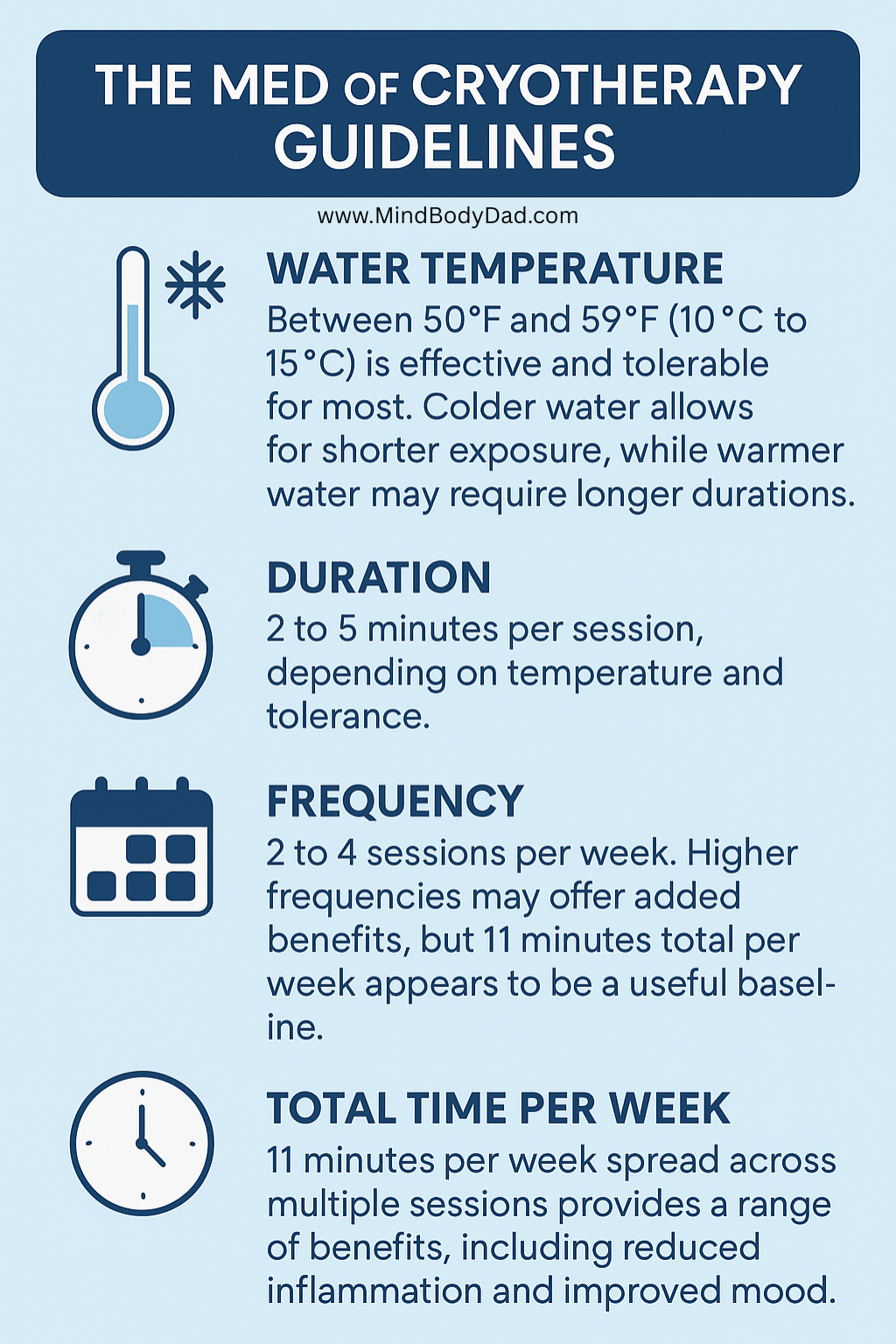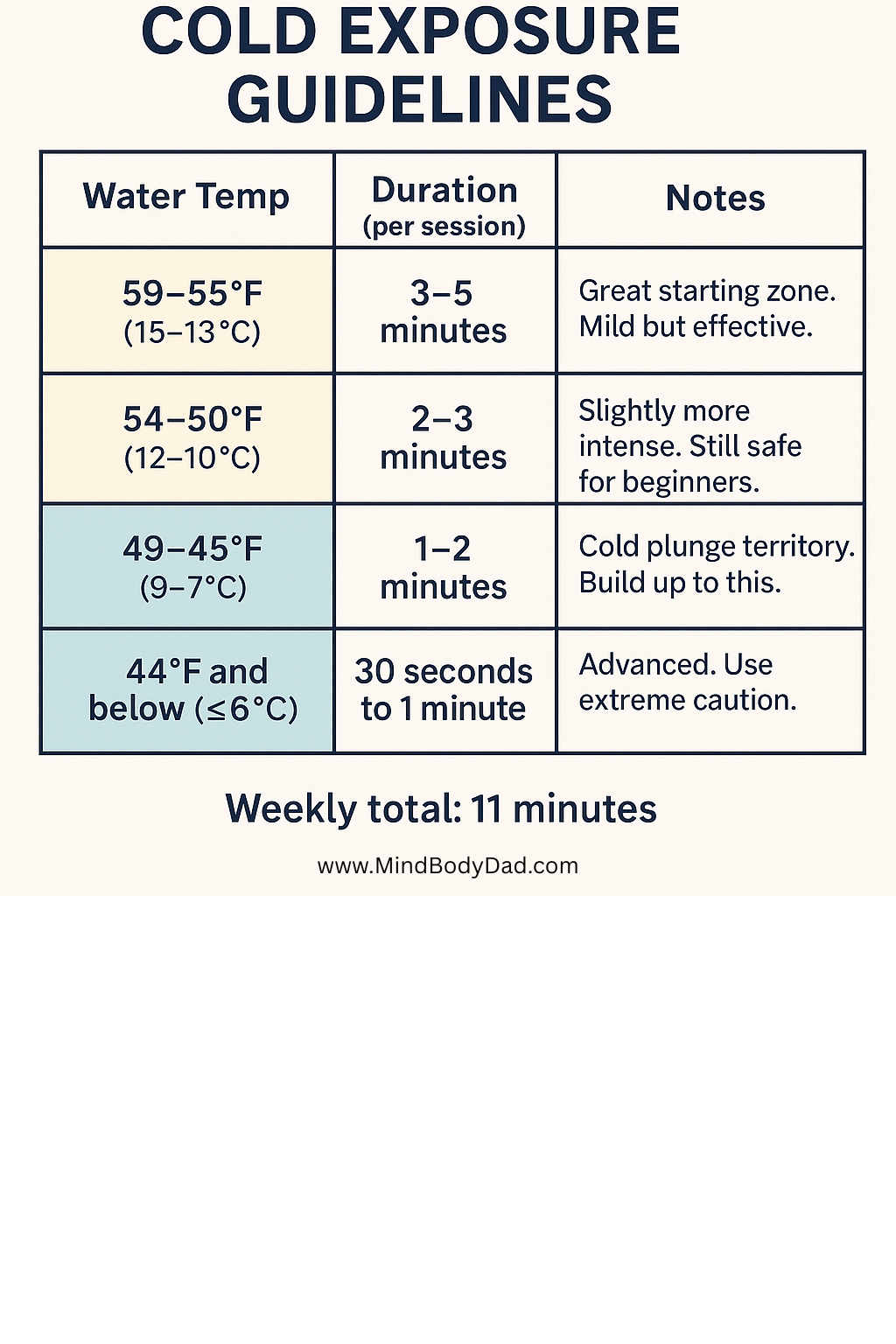The Minimum Effective Dose of Cold Water Immersion
"Cold therapy isn’t just a biohack—it’s a way to reconnect with your physiology and sharpen your nervous system's adaptability."
— Scott Carney, investigative journalist and author of What Doesn’t Kill Us
Cold exposure doesn’t have to be brutal. In fact, the best results often come from doing less, as long as it’s smart, consistent, and dialed in. The Minimum Effective Dose (MED) is all about finding the smallest amount of cold that still delivers a benefit. Whether you're using ice baths, cold showers, or a plunge tank, the goal is to trigger positive adaptations like improved mood, metabolism, and recovery, without overstressing your system.
Here’s what the science says about how cold, and how often, you actually need.
The Minimum Effective Dose (MED) of Cryotherapy (e.g. cold water immersion)
The Minimum Effective Dose (MED) refers to the smallest amount of a stimulus required to trigger a beneficial physiological response. For cryotherapy or cold exposure—whether through cold plunges, ice baths, or cold showers—it means identifying the minimal time and temperature needed to gain benefits like improved mood, recovery, metabolism, and resilience, without overexposure or risk.
The MED of Cryotherapy Guidelines
Water Temperature: Between 50°F and 59°F (10°C to 15°C) is effective and tolerable for most. Colder water allows for shorter exposure, while warmer water may require longer durations.
Duration: 2 to 5 minutes per session, depending on temperature and tolerance.
Frequency: 2 to 4 sessions per week. Higher frequencies may offer added benefits, but 11 minutes total per week appears to be a useful baseline.
Total Time Per Week: 11 minutes per week spread across multiple sessions.
Who Can Benefit from Cold Therapy (Cryotherapy)?
Immune System Support: A randomized controlled trial in the Netherlands found that participants who ended their showers with 30–90 seconds of cold water experienced a 29% reduction in sickness absence from work.
Chronic Pain Relief: Whole-body cryotherapy (WBC) has been shown to alleviate pain in individuals with chronic conditions like fibromyalgia. A randomized clinical trial demonstrated that WBC modulates neurotransmitters, potentially playing a role in pain relief for fibromyalgia patients.
Migraine & Headache Relief: Applying a frozen neck wrap targeting the carotid arteries at the onset of a migraine significantly reduced pain intensity in participants. This study suggests that targeted cold therapy can be an effective non-pharmacological intervention for migraine relief.
Acute Anxiety Management: Cold-water immersion has been associated with increased neural interaction between brain circuits involved in emotion regulation. This neural activity correlates with reduced nervousness and distress, indicating potential benefits for acute anxiety management.
Low Mood & Depression: A randomized controlled trial found that individuals with depressive episodes who underwent whole-body cryotherapy sessions showed significant improvements in mood, quality of life, and biochemical markers associated with depression.
Workout Recovery: Cold-water immersion (CWI) is effective in reducing muscle soreness and improving neuromuscular recovery after high-intensity exercise, however, immediate post-exercise CWI may blunt strength and hypertrophy adaptations. While a short duration likely won’t have much impact, delaying CWI for several hours after resistance training sessions is worthwhile.
General Wellness: Regular cold-water immersion has been linked to improved mood, reduced stress, and enhanced quality of life. A systematic review and meta-analysis concluded that CWI can be a valuable tool for promoting overall well-being.
How to Do Cold Water Immersion
You don’t need a fancy plunge tank or an Arctic lake to get started. From your shower to a storage bin on your deck, here’s how to build a cold practice that works.
1. Cold Showers
Start with a warm shower and finish cold. Turn the dial to its lowest setting and stay under for 30–90 seconds. Great for beginners and daily consistency.
What I do: I end each of my showers with at least a minute of cold (ideally more) when the water gets cold enough in Pennsylvania from October to Aprilish.
2. Ice Baths or Cold Plunge Tubs
Fill a tub, barrel, or plunge with cold tap water (or ice if needed). Find out the temperature (I use these floating thermometers) and submerge up to your shoulders for a minimum goal time based on he protocol below. This is the most intense (and most efficient) option.
What I do: I use The Ice Pod Pro (2.0) in my backyard (use the link for $10 off). It’s affordable, durable, and easy to set-up. Check out my full review here.
3. Contrast Showers
While this method is technically cold water immersion, it offers similar yet distinct benefits compared to sustained cold water exposure, such as improved circulation, reduced inflammation, and enhanced recovery. It also serves as a good introduction to more extended cold immersion practices. To do it, alternate between hot and cold water: 1 minute of hot, followed by 30–60 seconds of cold, for 3–4 rounds. Finish with cold water for optimal effects.
What I do: This is my “I can’t handle a sustained cold shower” protocol on days when I’m dragging and want to meet in the middle.
4. Natural Water (Lakes, Rivers, Ocean)
Polar Bear Plunge, anyone? Hopping in cold natural bodies of water is the most old-school, and arguably the most heroic, way to do this. Use the chart below to find a goal time to spend in the water based on the temperatue. Obviously, keep it safe.
What About Cryotherapy Chambers (i.e. Cryo Chambers)?
A word on cryotherapy: Despite its freezing capabilities, cryotherapy chambers don’t provide the same physiological benefits as cold water immersion. While these chambers can reach temperatures as low as -200°F to -300°F (-129°C to -184°C), the effect is different from actual cold water immersion. Think of it like this: putting your hand in an oven briefly set to 350°F versus putting your hand directly into water that is 350°F. The oven heats the air around you (convection), while the water directly surrounds your skin (conduction), causing a far more intense and uniform effect on your body. Cryotherapy chambers, while helpful for reducing localized inflammation and speeding up recovery, don’t offer the same deep, systemic benefits that cold water immersion provides. It’s certainly better than nothing, but it falls short of delivering the comprehensive advantages of sustained cold water exposure.
Practical Guidelines
Start Slow: Even 30 seconds in cold water has benefits. Ramp up as tolerated.
Use Controlled Breathing: Inhale and exhale slowly through the nose. Find a breathwork strategy that works for you and stick with it. My favorite for ice baths is box breathing.
Post-Exposure: Let your body warm naturally. Shivering increases metabolic activation.
Best Timing: Morning or midday. Avoid evening sessions, which may delay sleep onset.
Consistency Over Intensity: Cold exposure is a hormetic stressor. Small, repeat doses work best.
Red Flags & Safety
Skip cold exposure if you have known cardiovascular, seizure, or Raynaud ’s-related issues unless cleared by a physician.
Never do cold plunges while alone, after alcohol, or in open water without supervision.
Discontinue if you feel disoriented, numb, or unable to control your breathing.
What I Do
Cold water is my archnemesis. I know there are benefits but I’m just terrible at tolerating cold temperatures. I’m convinced this is why I would not complete hell week to become a Navy SEAL (among a million other things).
That being said, I like to push my boundaries and challenge myself. When the water is cold enough from October to May, I end my daily showers with cold water for at least a minute most days.
Some days, though not as often, I use an Ice Pod outside, which varies in temperature with the ambient air. My goal is the MED of 11 minutes a week, but this varies.
Can you hear my wavering in this? I do it, but not as much as I probably should to reap the benefits. I’m working on it.
The Takeaway
Cold exposure doesn’t have to be heroic. It just needs to be consistent. Eleven minutes a week, divided smartly and adjusted for temperature, is enough to boost your mood, sharpen your focus, and train your stress response.
Less than two minutes a day can improve your biology. That’s a return on time few habits can match.
Related:


